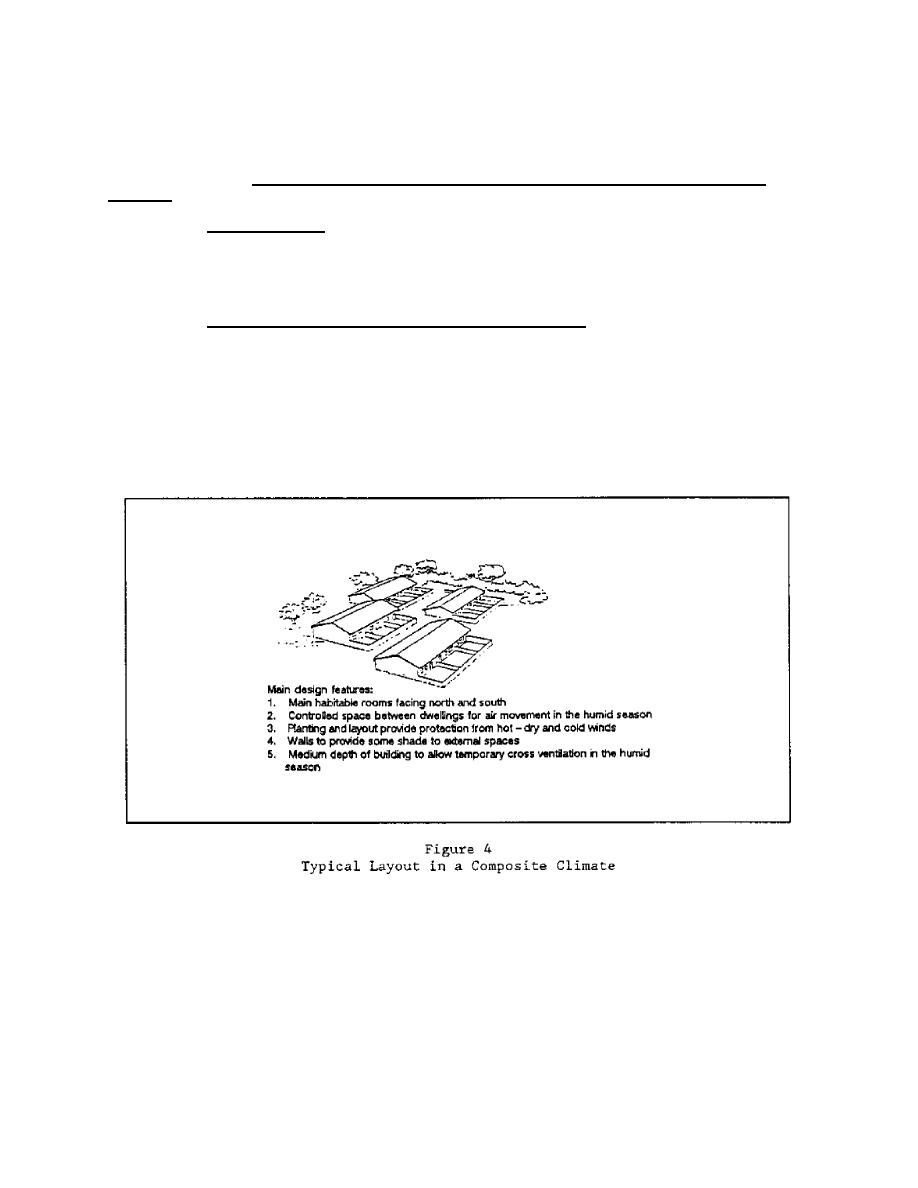
MIL-HDBK-1011/2
Evaporative cooling is not covered further in this handbook. For
requirements for the design of buildings using evaporative cooling refer to
NAVFAC DM 3.03, Heating, Ventilating, Air Conditioning, and Dehumidifying
Systems.
2.2.5
Earth Cooling. The earth may be used as a heat sink wherever the
below grade soil temperature is lower than the ambient interior temperature.
The ground is the only heat sink to which a building can continuously lose
heat by means of conduction during the overheated season. There are no simple
analytical techniques for predicting the cooling potential of the ground.
2.2.6
Combinations of Natural Cooling Strategies. It is possible to
combine the natural cooling strategies, or to use a natural cooling strategy
with mechanical air conditioning or heating. Combinations may be achieved on
a seasonal basis (such as winter mechanical heating with natural ventilation
in the summer for cooling) or by spatial zoning in buildings (partly air
conditioned and partly naturally ventilated). Combining the strategies with
mechanical systems are especially useful in composite climates where seasonal
variations complicate the design of the building (see Figure 4). For a
description of zoned buildings refer to para. 3.2.
2.3
Comfort Criteria. The acceptable comfort zone shall be that
prescribed by the American Society of Heating, Refrigerating, and Air
Conditioning Engineers (ASHRAE) Standard 55, Thermal Environmental Conditions
for Human Occupancy. Eighty percent or more of the building occupants will
find this zone thermally acceptable in still air and shade conditions. Figure
5 shows the acceptable range of temperature and humidity conditions for
persons in typical summer (0.35 to 0.6 clo) and winter (0.8 to 1.2 clo)
clothing at near sedentary (less than 1.2 met) activity levels. Refer to
Appendix A, Section 1 for a more detailed description.
8



 Previous Page
Previous Page
